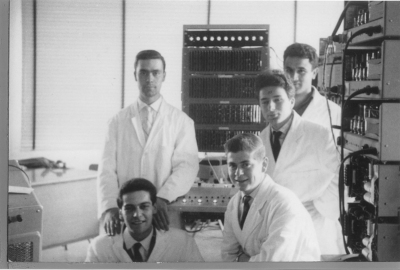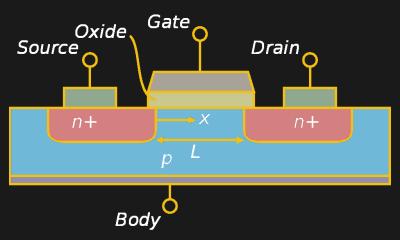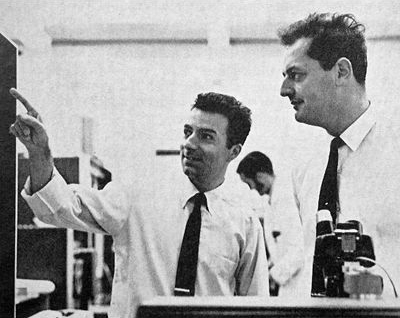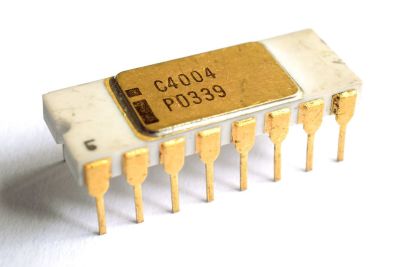
Among the illustrious Italian scientists, creators of cutting-edge technological innovations (we have already talked about Per Giorgio Perotto and Leonardo Chiariglione), Federico Faggin, the Italian who designed the first microprocessor, stands out without a shadow of a doubt.
Federico Faggin was born in Vicenza, Italy, in 1941 and is an Italian-American physicist, engineer, inventor and entrepreneur who has always had a technical-scientific education thanks to his attendance at the ITIS “Alessandro Rossi” and his degree in Physics from the University of Padua, which he obtained at the age of just 19.
He soon obtained a short-term job at the Olivetti Electronics Laboratory. There he worked on a small experimental transistor computer with 4096 words and a 12-bit magnetic core memory and a logic gate CPU.

After his boss had a serious car accident, Faggin took over as project manager. The job was a great learning experience for his future career. He then studied physics at the University of Padua where he graduated with honors in 1965. He continued for a year teaching electronics to 3rd year students.
In 1967 he started working at SGS-Fairchild, now STMicroelectronics, in Italy. There he developed their first MOS (metal-oxide-semiconductor) silicon gate technology (SGT) and their first two commercial MOS integrated circuits. He was then sent to Silicon Valley in California to work at Fairchild Semiconductor in 1968.
During the 1960s, logic for integrated circuits was largely done using TTL (Transistor-Transistor Logic). The two Ts refer to the use of bipolar junction transistors. TTL technology was fast, but took up a lot of space and consumed a lot of power.

MOSFET, by CyrilB CC-BY-SA 3.0
On the other hand, integrated circuits containing MOSFETs had manufacturing problems that led to inconsistent and variable speeds, as well as slower speeds than theoretically possible. If these problems had been solved, MOS technology would have been a good replacement for TTL on integrated circuits, since they could be packed into a smaller space. But MOSFETs required much less power.
In 1968, Faggin was tasked with developing Fairchild’s self-aligned MOS process technology. He first worked on a precision etching solution for the amorphous silicon gate and then created the process architecture and steps for fabricating integrated circuits. He also invented buried contacts, a technique that further increased density through the use of an additional layer that creates ohmic connections between the polysilicon gate and the junctions.

Faggin and Tom Klein at Fairchild in 1967, credit: Fairchild Camrea & Instrument Corporation
These techniques became the basis of Fairchild’s Silicon Gate Technology (SGT), which was widely used by the industry thereafter.
Faggin went on to make the first silicon gate IC, the Fairchild 3708. This was a replacement for the 3705, a metal gate IC implementing an 8-bit analog multiplexor with decoding logic, which they had trouble making due to stringent requirements. During its development, he further refined the process by using phosphorus getter to absorb impurities and replacing vacuum-evaporated amorphous silicon with polysilicon applied by vapor deposition.
The resulting SGT meant that more components could fit on the IC than TTL, and power requirements were lower. It also improved speed by three to five times over the previous MOS technology.
Faggin left Fairchild to join the two-year-old Intel in 1970 to design the chip for the MCS-4 (Micro Computer System) project. The goal of the MCS-4 was to produce four chips, initially for use in a calculator.

Intel C4004 by Thomas Nguyen CC BY-SA 4.0
One of those chips, the Intel 4004, became the first commercially available microprocessor. The SGT he had developed at Fairchild allowed him to fit everything on a single chip. Suffice it to say, he succeeded, and by March 1971, all four chips were fully functional.
Faggin’s design methodology would go on to be used for all of Intel’s early microprocessors. This included the 8-bit 8008 introduced in 1972, and the Intel 4040, an improved version of the 4004 in 1974, where Faggin took a supervisory role.
Meanwhile, Faggin and Masatoshi Shima, who worked on the Intel 4004, developed the design for the 8080. It was released in 1974 and was the first high-performance 8-bit microprocessor.
In 1974, Faggin left Intel to co-found Zilog with Ralph Ungermann to focus on microprocessor manufacturing. There he co-designed the Zilog Z80 with Shima, who joined him at Intel. The Zilog Z80 was software compatible with the 8080 but was faster and had twice the number of registers and instructions.

The Zilog Z80 became one of the most popular CPUs for home computers until the mid-1980s, typically with the CP/M operating system. Notable computers included the Heathkit H89, the Osborne 1, the Kaypro series, a number of TRS-80s, and some Timex/Sinclair computers. The Commodore 128 used one along with the 8502 for CP/M compatibility, and a number of computers could use it as an add-on.
After leaving Zilog in 1984, Faggin created his second startup, Cygnet Technologies, Inc. There he conceived the Communication CoSystem, a device that sat between a computer and a telephone line and allowed both voice and data to be transmitted and received during the same session. In 1986, he co-founded Synaptics with Carver Mead and became its CEO. Initially, they conducted research and development of artificial neural networks and in 1991 produced the I1000, the first single-chip optical character recognizer. In 1994, they introduced the touchpad, followed by the first touchscreens.
Between 2003 and 2008, Faggin served as president and CEO of Foveon, where he refocused his business on image sensors.
Faggin has received numerous awards and honors, including the Marconi Prize, the Kyoto Prize for Advanced Technology, Fellow of the Computer History Museum, and the 2009 National Medal of Technology and Innovation from President Barack Obama.
In In 1996 he was inducted into the National Inventor’s Hall of Fame for co-inventing the microprocessor. In 2011 he and his wife founded the Federico and Elvia Faggin Foundation, a non-profit organization that supports research on consciousness through theoretical and experimental research, an interest he developed during his time at Synaptics. His work with the Foundation is now his full-time job.
He still lives in Silicon Valley, California, where he and his wife moved from Italy in 1968.
Source
Follow us on Google News to receive daily updates on cybersecurity. Contact us if you would like to report news, insights or content for publication.
